
Parodia chrysacanthion Photo by: Peiffer Clement
Origin and Habitat: Parodia chrysacanthionSN|11716]]SN|11716]] is endemic to Jujuy, Argentina. The population overall seems stable and the species has many abundant subpopulation.
Type: Volcan, Sudwestgebirge, Jujuy province (Argentina)
Altitude: It occurs at elevation of 500-2,500 metres above sea level.
Habitat and Ecology: It grows on rocks that show between the forest. Even though the species has a small range, the only threat is localised and it causes no declines on the popualtion. The species is locally removed to be sold as an ornamental, however in very small amounts that does not affect the population, hence extraction from the wild is not a threat.
Synonyms:
Common Names include:
ENGLISH: Golden Powder Puff
RUSSIAN (Русский): Пародия золотистоиглая / «золотой ежик»
Description: The Golden Powder Puff (Parodia chrysacanthionSN|11716]]SN|11716]]) is a globular to columnar cactus, with a much-ribbed, green stem densely covered with bristle-like, golden spines. The crown bears a mass of large golden flowers in spring and, often, pale yellow wool.
Derivation of specific name: The epithet 'chrysacanthion'; from Greek 'chrysos', gold; and Greek 'akanthion', small spine, small thorn; refers to the colour of the dense fine spination.
Stems: Usually simple, depressed globose at first, later short cylindrical, 5-12 cm high, eventually up to 10 cm in diameter, rarely larger, light green, very woolly and surrounded by rings of erect
spines apically.
Ribs: Spiraled, tubercled.
Spines: 30-40, straight, needle-like to bristly, golden yellow to whitish (or brownish), 1-2 cm long, all straight (not hooked).
Flower: 1 to 11 (or more in cultivation), central and radial spines similar, yellow, to 20(-30) mm long, 1-2 cm in diameter. Ovary mostly naked; floral tubes with bristles and wool.
Blooming season: Spring.
Fruits: Small, ovoid, fleshy.
Seeds: With large caruncles, seed coat tuberculate, dark brown to black, 0.75-1 mm.
Bibliography: Major references and further lectures
1) Kiesling, R. 2013. Parodia chrysacanthion. The IUCN Red List of Threatened Species. Version 2014.3. <www.iucnredlist.org>. Downloaded on 31 January 2015.
2) Edward Anderson “The Cactus family” Timber Press, Incorporated, 2001
3) James Cullen, Sabina G. Knees, H. Suzanne Cubey "The European Garden Flora Flowering Plants: A Manual for the Identification of Plants Cultivated in Europe, Both Out-of-Doors and Under Glass" Cambridge University Press, 11/August /2011
4) David R Hunt; Nigel P Taylor; Graham Charles, International Cactaceae Systematics Group. "The New Cactus Lexicon" dh books, 2006
5) Kiesling, R. 2013. Parodia chrysacanthion. The IUCN Red List of Threatened Species 2013: e.T152119A599182. http://dx.doi.org/10.2305/IUCN.UK.2013-1.RLTS.T152119A599182.en. Downloaded on 15 April 2016.
6) N. L. Britton, J. N. Rose “The Cactaceae. Descriptions and Illustrations of Plants of the Cactus Family.” Volume 3, The Carnegie Institution of Washington, Washington 1922
7) Christopher Brickell “RHS Encyclopedia of Plants and Flowers” Dorling Kindersley Ltd, 01 September 2010
8) H. Krainz “Die Kakteen: eine Gesamtdarstellung der eingeführten Arten nebst Anzucht- und Pflege-Anweisungen,” Parts 1-16” Franck, 1956
9) Hans Hecht “BLV-Handbuch der Kakteen” BLV-Verlagsgesellschaft, 1982
10) Haustein, Erik. “Der Kosmos-Kakteenführer.” Kosmos / Gesellschaft der Naturfreunde., Stuttgart, 1983
11) Willy Cullman, Erich Gotz, Gerhard Groner “The Encyclopedia of Cacti” Alphabooks, 1986
12) Urs Eggli, Leonard E. Newton “Etymological Dictionary of Succulent Plant Names”. Springer, Berlin/Heidelberg 2010
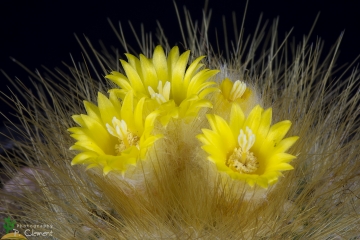 Parodia chrysacanthion Photo by: Peiffer Clement
Parodia chrysacanthion Photo by: Peiffer Clement Parodia chrysacanthion Photo by: Andrea B.
Parodia chrysacanthion Photo by: Andrea B.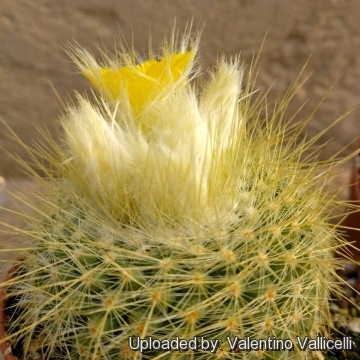 Parodia chrysacanthion Photo by: Valentino Vallicelli
Parodia chrysacanthion Photo by: Valentino Vallicelli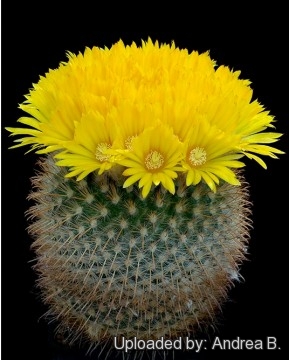 Parodia chrysacanthion Photo by: Andrea B.
Parodia chrysacanthion Photo by: Andrea B.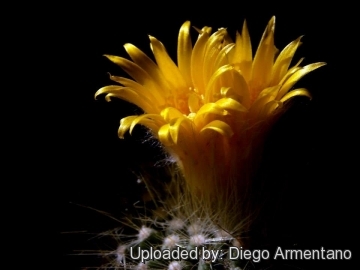 Parodia chrysacanthion Photo by: Diego Armentano
Parodia chrysacanthion Photo by: Diego Armentano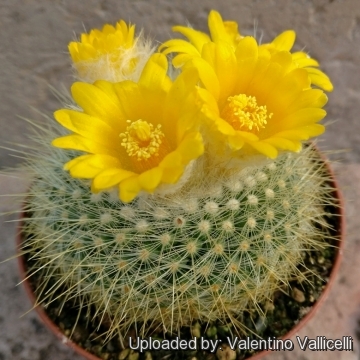 Parodia chrysacanthion Photo by: Valentino Vallicelli
Parodia chrysacanthion Photo by: Valentino Vallicelli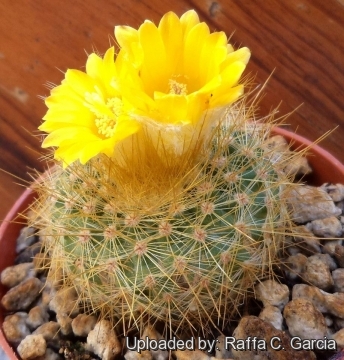 Parodia chrysacanthion Photo by: Raffa C. Garcia
Parodia chrysacanthion Photo by: Raffa C. Garcia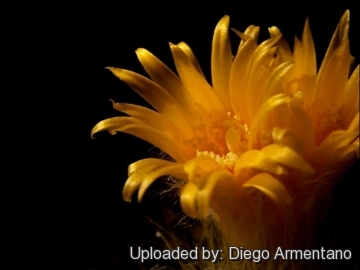 Parodia chrysacanthion Photo by: Diego Armentano
Parodia chrysacanthion Photo by: Diego ArmentanoCultivation and Propagation: Water these plants regularly, and fertilize with a low nitrogen fertilizer every 6 to 8 weeks, from mid-spring to late summer. This plant should remain rather dry at other times (especially in winter), except for a quick, periodic misting on warmer days in late winter. If it is kept absolutely dry for a long period, it tends to lose its roots in winter. It can tolerate light frost (- 4C°), but rots easily if wet and cold.
If the local climate is warm enough to grow this plant outside, be sure that soil is well drained and sun if full, but with protection from strong midday rays.
Propagation: By Seeds that are very fine. Patience is required when growing various Parodia species from their small, slowly germinating seeds, some of which take as many as two years to germinate.



















